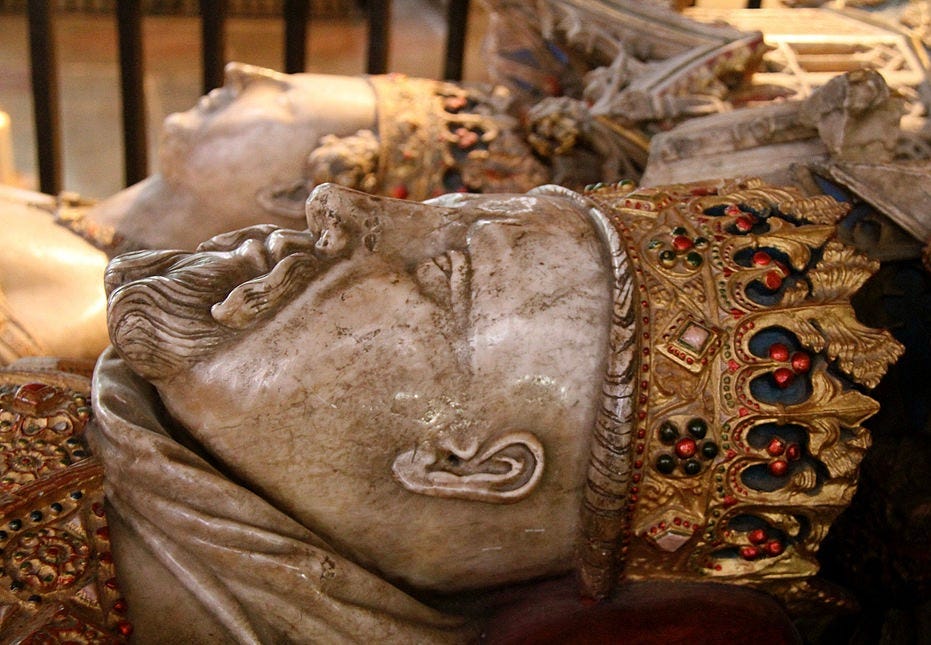These days – whether you’d call it squeamishness or proper sensitivity – we’re mostly reluctant to disturb burial sites. It’s unthinkable, now, that a royal grave might become a research project (unless, of course, one turns up unexpectedly in a car park).
But it wasn’t always so.
In the eighteenth and nineteenth centuries, our forebears were much more gung-ho. As a result, many of the tombs of England’s medieval kings have been opened and investigated or otherwise inspected – and, in an occasional series here, I’m going to look at how and why.
Sometimes, there was restoration in train, with archaeologically minded antiquarians in charge.
Sometimes – as in today’s example – it was a much more ad hoc, get-stuck-in operation.

When he died in 1413, Henry IV was buried, as he had asked, in Canterbury Cathedral beside the shrine of St Thomas Becket. The marble monument that stands above the grave was commissioned a decade later by his widow, Joan of Navarre, whose alabaster effigy lies alongside Henry’s on the tomb chest.
But a strange story persisted over the centuries: that Henry’s body didn’t, in fact, lie in his grave.
Keep reading with a 7-day free trial
Subscribe to The H Files by Helen Castor to keep reading this post and get 7 days of free access to the full post archives.
